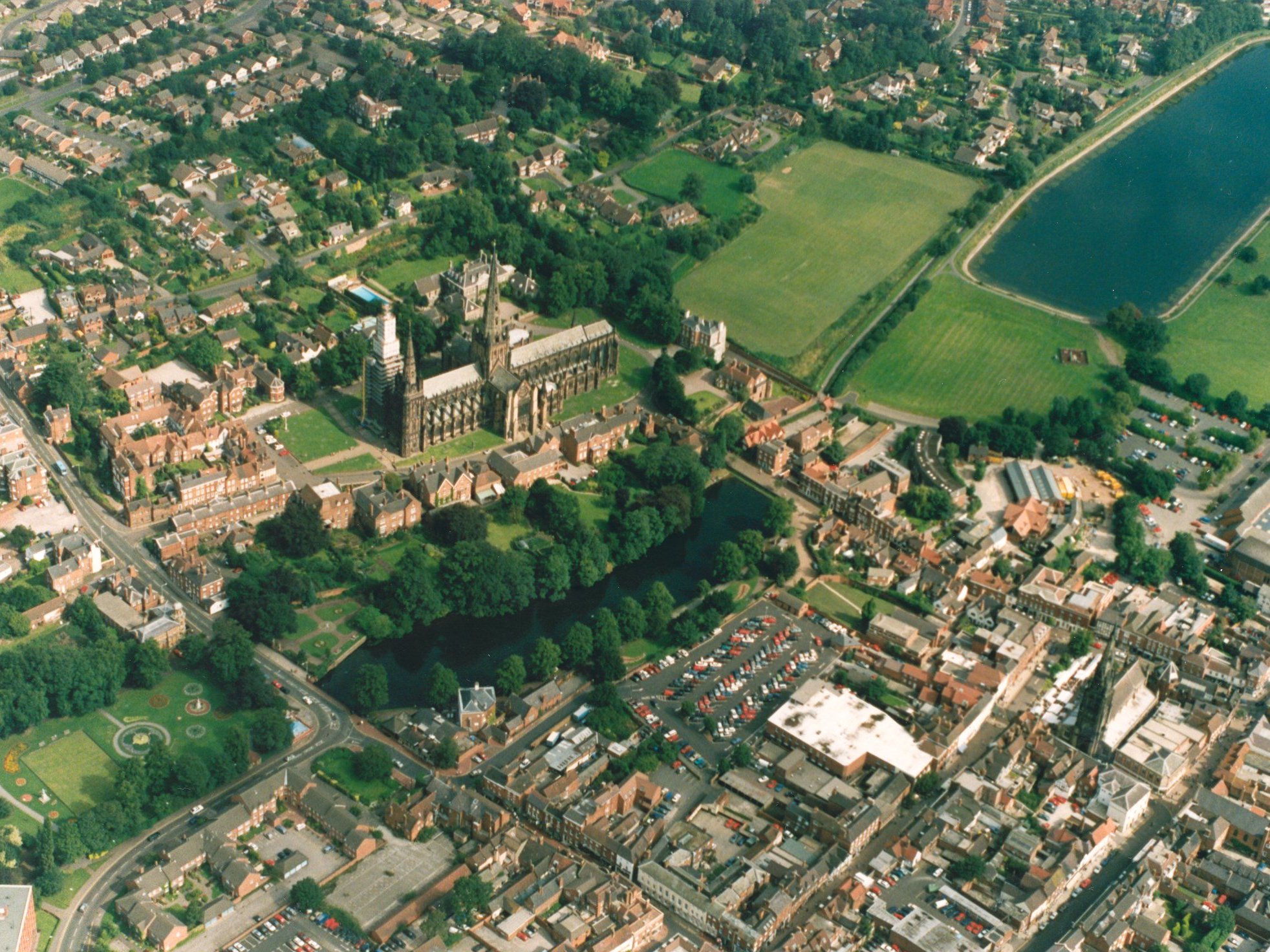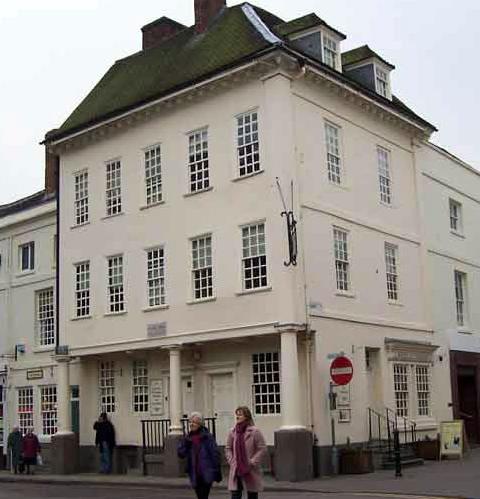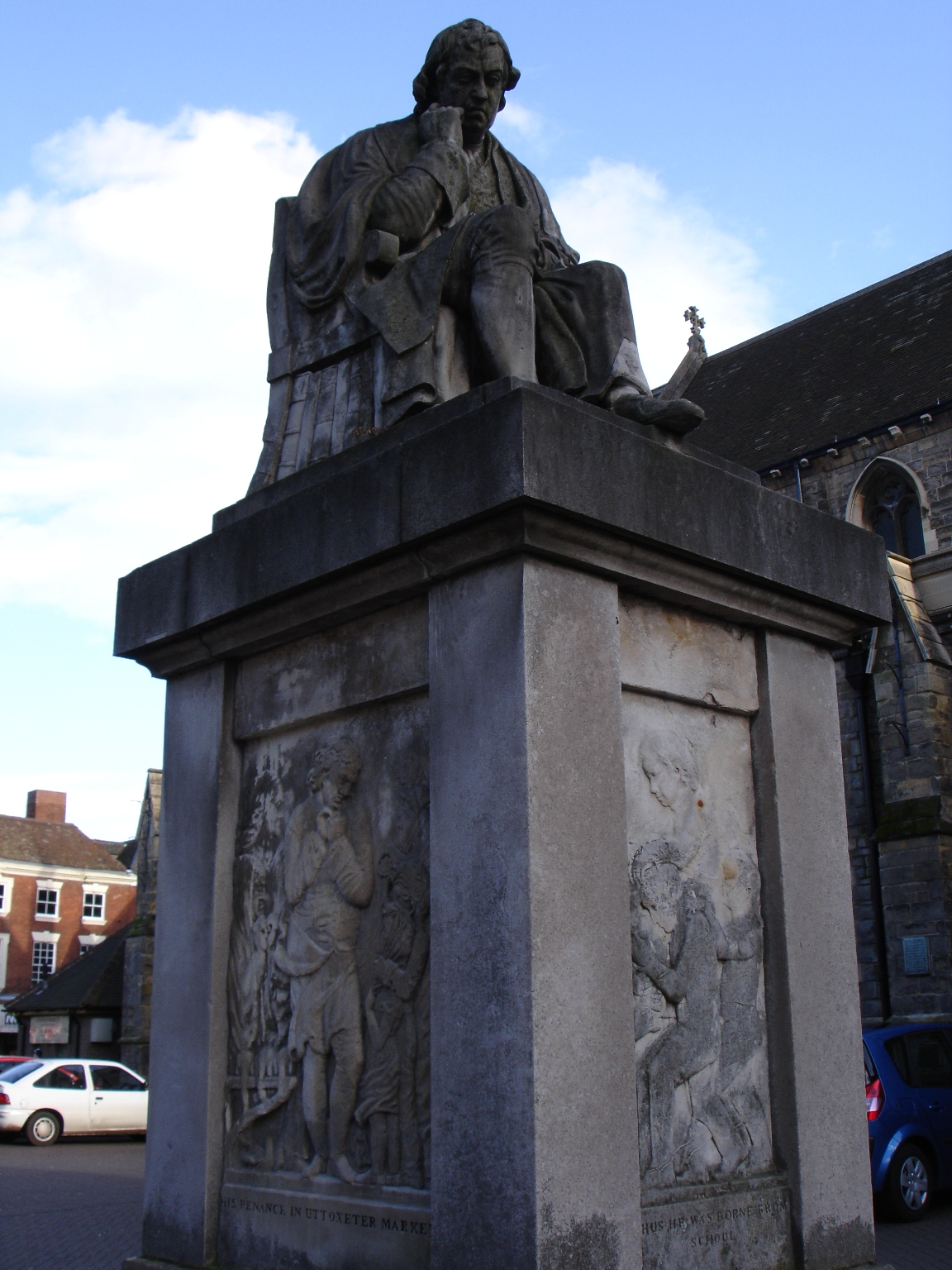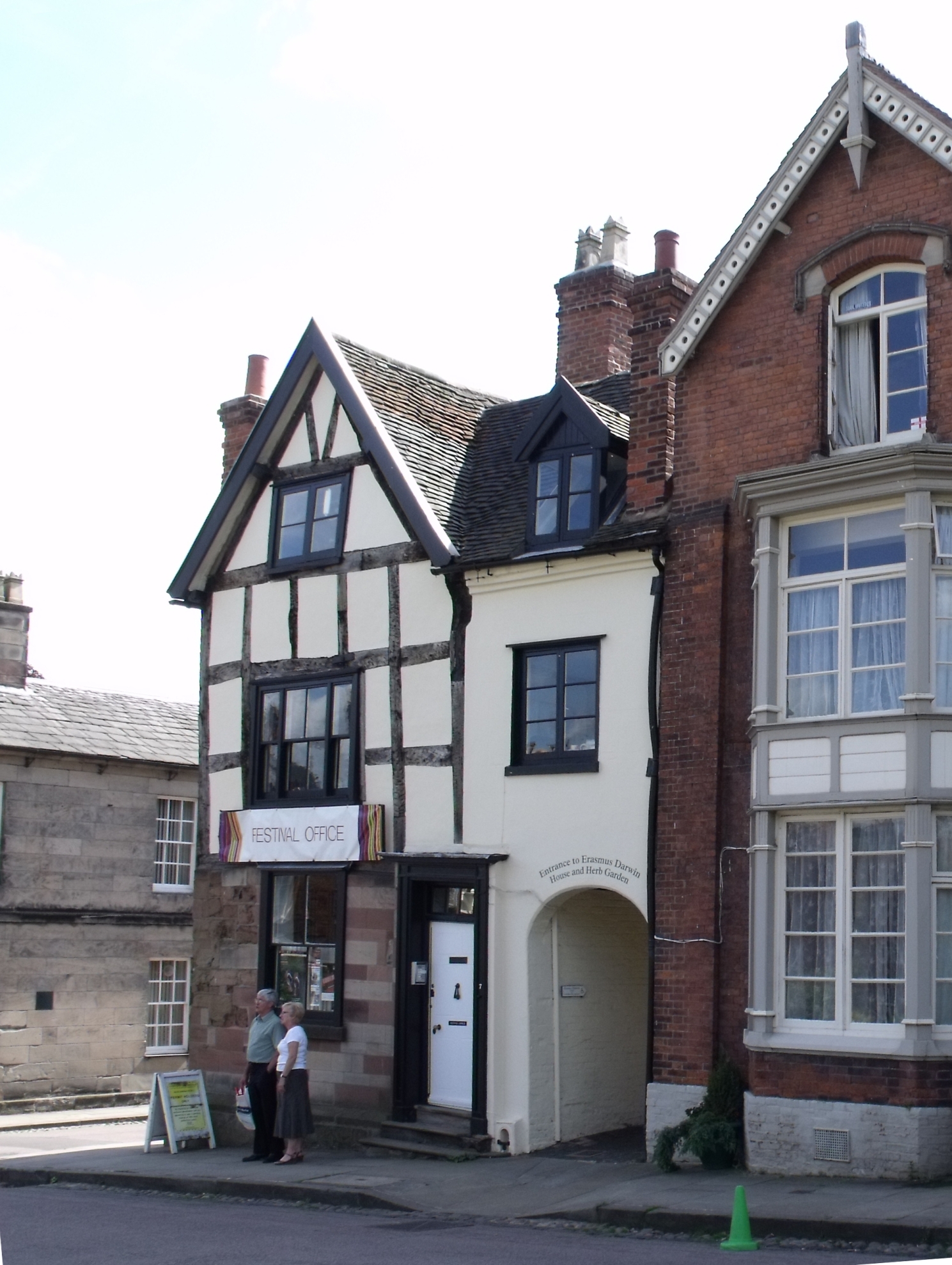It’s a well-established local truism that Lichfield is the centre of the known universe. With the discovery of the Staffordshire Hoard there must be more to come. We, at the Coach House, await the excavation of King’s Barrow across the lane. It is allegedly the burial site of Saxon kings – who knows what ancient riches it may contain?
Lichfield is one of the oldest settlements in Britain, first entering the history books in the mid seventh century AD when it became the centre of ecclesiastical power for the Kingdom of Mercia, which dominated England during the period known as the Heptarchy. However, legend has it that nearly 400 years earlier almost a thousand Christians were martyred in Lichfield during the reign of the Emperor Diocletian, and that the name “Lichfield” means “field of the dead”!
The etymology has been the subject of much discussion over the centuries – click here for an in-depth summary.
The discovery of the Staffordshire Hoard on the outskirts of Lichfield has led to increased interest in the stories surrounding the hill, which is the highest point of the city giving a vantage point to any defenders of this ancient location.
Earlier centuries saw the Romans settle in the area due to the natural strategic features and position at the crossing of Ryknild Street and Watling Street.
The Roman settlement, Letocetum, was an important staging post for centuries and was listed in the Historia Brittonum in AD 830 (one of the earliest historical texts about Britain). Its remains are located in the nearby village of Wall. The site is administered by the National Trust, and the remnants of a bathhouse can still be seen there.
More information about Letocetum can be found at the National Trust and English Heritage.
Chetwynd House and the Coach House are situated on Borrowcop Lane, one of Lichfield’s premier residential streets, located on a hill towards the south of the city. Its history goes back to Saxon times, “Borrowcop” being a burial mound traditionally believed to be the grave of three martyred kings. The house immediately opposite Chetwynd is “King’s Barrow” – meaning king’s grave.
Lichfield was at the forefront of the country moving out of the Dark Ages. St. Chad, the Bishop of Mercia, established his wooden cathedral at “Licifelth” in middle of the seventh century AD, eventually making the town the ecclesiastical fulcrum of the powerful English kingdom – again linking to the origins of the Staffordshire Hoard. King Offa even raised Lichfield to the status of archbishopric, with authority over all the bishops from the Thames up to the Humber! This would last only 16 years until the archbishopric was restored to Canterbury.
The wooden cathedral was built circa AD 700 and remained in existence until the eleventh century, when a Norman stone cathedral was built in its place. This was itself replaced by the present Gothic style cathedral which began in AD 1195 and saw the creation of the only medieval English cathedral to have three spires.
The Cathedral was besieged three times by the Roundheads during the English Civil War, with one of the spires collapsing in 1646 leading to rebuilding and a re-consecration in 1670 by Bishop Hacket.
The “Three Ladies of the Vale” have dominated the city skyline ever since the 12th century, and the Cathedral and its treasures are a fundamental part of any trip to Lichfield. The Cathedral’s programme of music is an essential element of the city’s cultural backdrop.
Click here for some more history about Lichfield Cathedral.
Lichfield became the “city of philosophers” according to one of its most celebrated sons, Samuel Johnson. Last year the city celebrated the 300th anniversary of his birth.
The “Samuel Johnson Birthplace Museum & Bookshop” is the focus of the man’s life in Lichfield, and is open throughout the year.
The statue of Doctor Johnson and that of his biographer, Boswell, dominate the Market Square in front of the Heritage Centre.
Click here for some more information about the Birthplace Museum.
A scholar, polymath and one of the key thinkers of his “Midlands Enlightenment” of the late eighteenth century, Erasmus Darwin was one of the great networkers and helped create the Lunar Society of Birmingham with friends Matthew Boulton, Josiah Wedgewood and James Watt.
The society became the main intellectual and practical powerhouse of the Industrial Revolution in England.
A scientist and natural philosopher, his theories of biological evolution were only finally proven by his grandson, Charles Darwin, in The Origin Of Species.
His townhouse, where he lived from 1758 to 1781, served as the base for his medical practice as well as meetings of the Lunar Society. It still stands today and is now a museum open to the general public.
Click here to find out more about Erasmus Darwin House.






